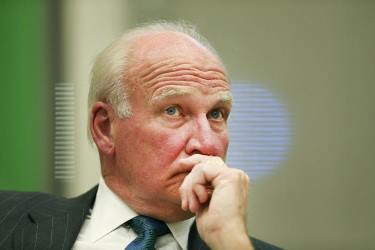 Robert Breuder
Robert BreuderAfter Sweet Briar College President James F. Jones Jr. told faculty in early March that the college would not be reopening next year, the faculty also learned that they “might” get severance pay. More information would be forthcoming, they were told.
Faculty were not particularly reassured by this state of affairs. Their plight was particularly dire because March is the tail end of the academic hiring cycle, leaving many potentially out of work for the next year. Some banded together and sued to ensure that they would all be compensated.
They were not the only ones suing ― alumnae were outraged that the college would be closed so abruptly and seemingly without explanation or warning. Ultimately, the alumnae and faculty were victorious, and on Monday, the disparate parties came to a settlement agreement. Per the settlement agreement, the college will stay open for another year, and any faculty or staff member who chooses to leave the college will receive six months of severance pay.
President Jones will resign from his post, but his claim to severance pay was assured from the outset. Having the leverage to write in severance pay into the employment contract from the outset is but one of the perks of being a college president.
Severance packages for college and university president can be quite hefty. It recently came to light that Yale University President Richard C. Levin received $8.5 million as a supplemental pension payment when he stepped down in 2013. However, unless it is an exorbitant amount or there are extenuating circumstances, presidents typically collect their severance pay without much remark from outside parties. After all, the salaries they earn while actually in office are so much more distracting.
According to the Chronicle of Higher Education, which maintains a database of such information, the average college president earned an annual salary of $400,000 in 2012. Some three dozen had annual incomes that topped $1 million. Dr. Shirley Ann Jackson was paid $7,143,312 in 2012 as president of Rensselaer Polytechnic Institute. Altruistic figures such as the interim president of Kentucky State University, who shaved off $90,000 from his $349,869 salary in 2014 to help pay the wages of his campus’ lowest paid workers are the exception, not the norm.
A new report out this week from Mercer and Witt/Kieffer takes a step towards shedding more light on trends in severance payments. Mercer partner Karen Hutcheson said, “Colleges and universities are really going under considerable change and part of that is really the changing of the leadership structure.”
Increasingly, college and university presidents are staying in office for shorter terms, and are coming into their positions from outside of academia. As a result, the compensation structure is changing and growing to reflect a more corporate model ― including allocations for severance or deferred payments and more.
As they move into uncharted territory, “[boards] are looking for guidance, frankly, when they’re developing presidential contracts and they’re negotiating them,” Hutcheson said. The study was developed to help create a reference point for them.
The report looked at 63 colleges and universities in the United States. Hutcheson said that Mercer and Witt/Kieffer intentionally sought out a balanced representation of the different institutional types in the United States ― public, private, four-year and two-year. Although they received a lower response rate from community colleges, she said that the report is representative of a mix of the other institutional types.
According to the report, not all institutions have a formal severance agreement with their presidents. Of those that do, 60 percent outline the terms of the agreement in the employment contract. “We’d like to see that number higher, because we think that having at least some parameters and guidelines embedded in the contract, embedded in the agreement, is just good practice,” Hutcheson said.
One of the more controversial severance payments in recent years will go to College of DuPage President Robert Breuder. The board voted to pay Breuder $763,000 if he would agree to retire in 2016, three years early. Within five months of the board making that announcement, Illinois state legislators proposed a bill that would cap outgoing community college presidents’ severance pay at no more than a year’s salary and benefits. The House rejected the bill on Tuesday.
Although severance payments may seem high, said Dr. Donald Heller, dean of the Michigan State University College of Education, there is a rationale behind it. The presidential search process is quite lengthy, so it may be a year or more before a president can find another job. Severance pay is intended to tide them over until they can find another position. As the report found, the median severance period is 12 months, reflecting the length of the job search.
Boards may also pay up to avoid a lawsuit if a president is let go before the contract is up. “In a lot of cases, boards see [paying severance to outgoing presidents] as a way of avoiding a nasty battle, particularly a lawsuit from a president whom they are terminating,” Heller said. “They agree to pay some severance and in return the president agrees not to sue. Then everybody walks away and doesn’t have this lingering over them for months or years.”
Staff writer Catherine Morris can be reached at [email protected].















